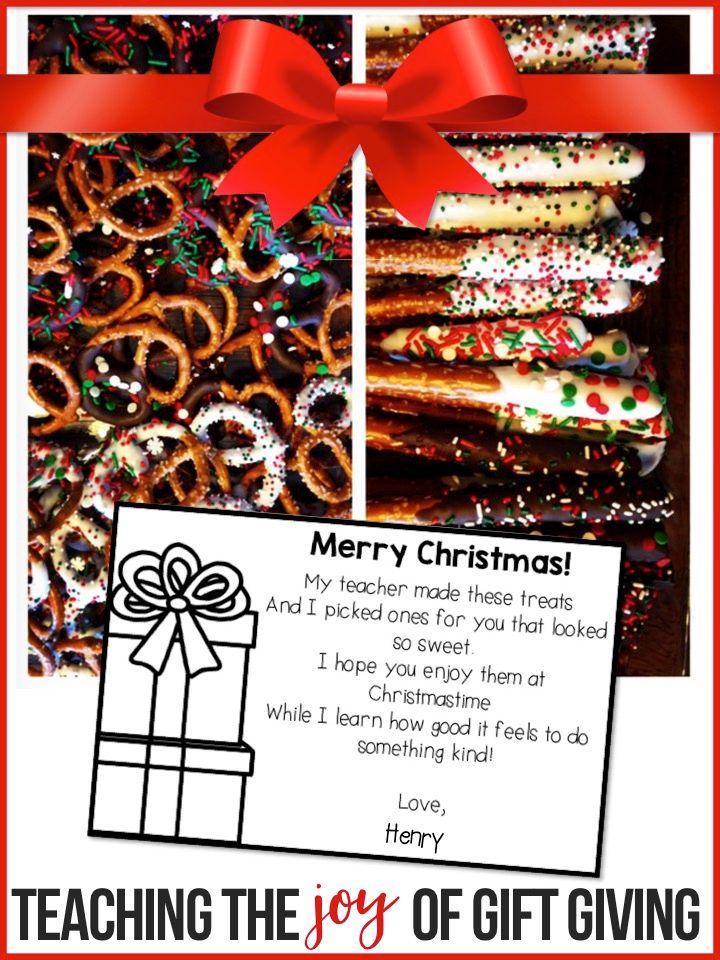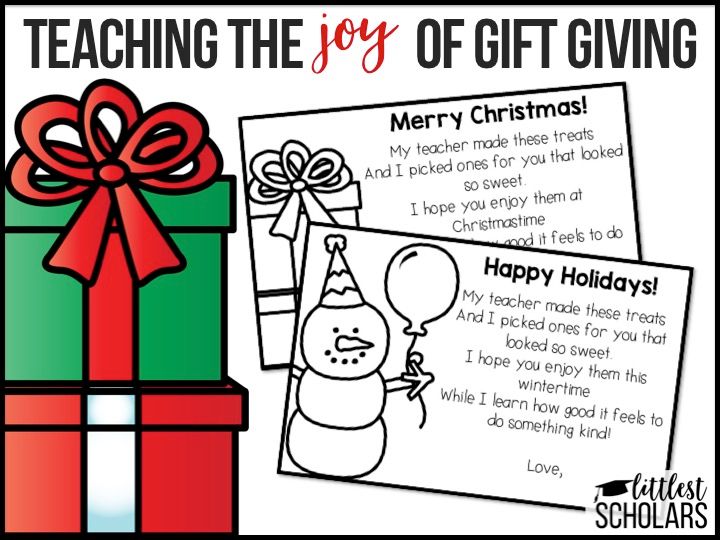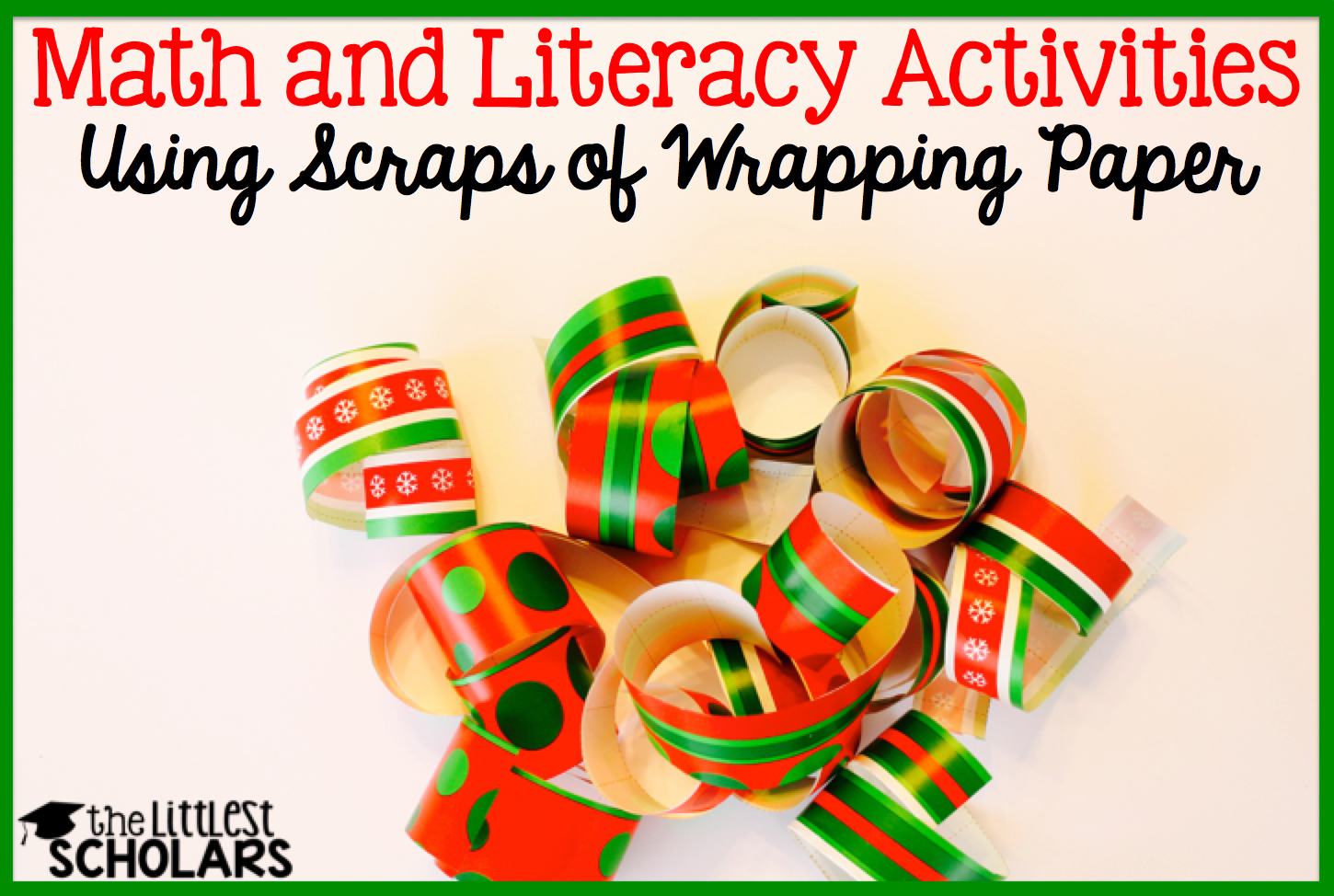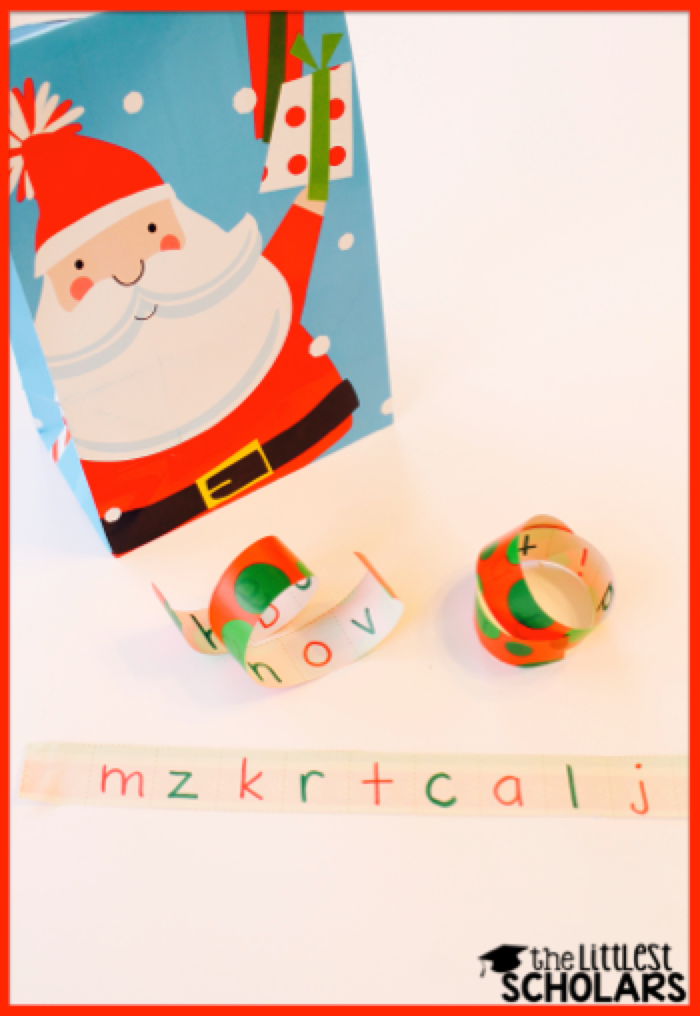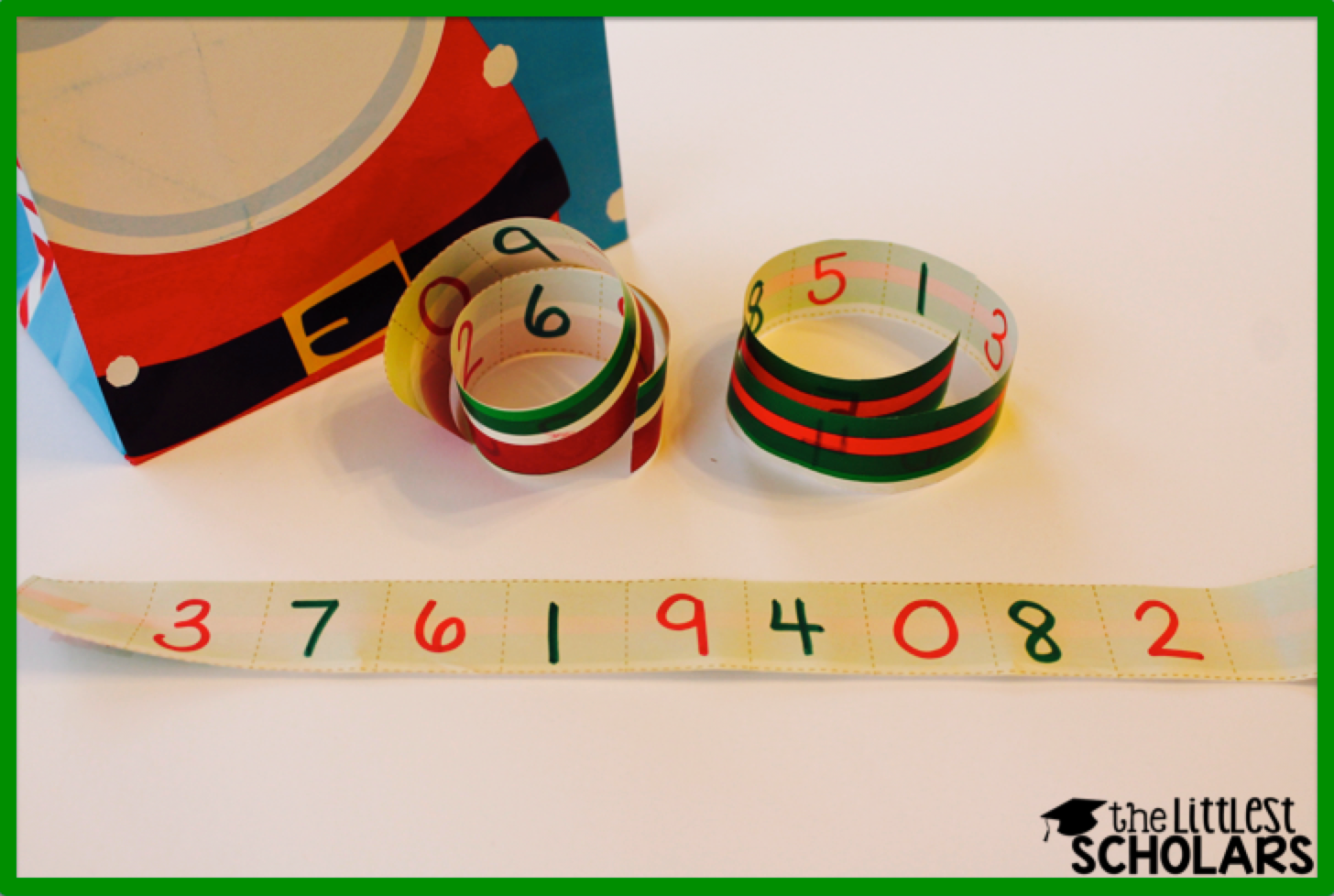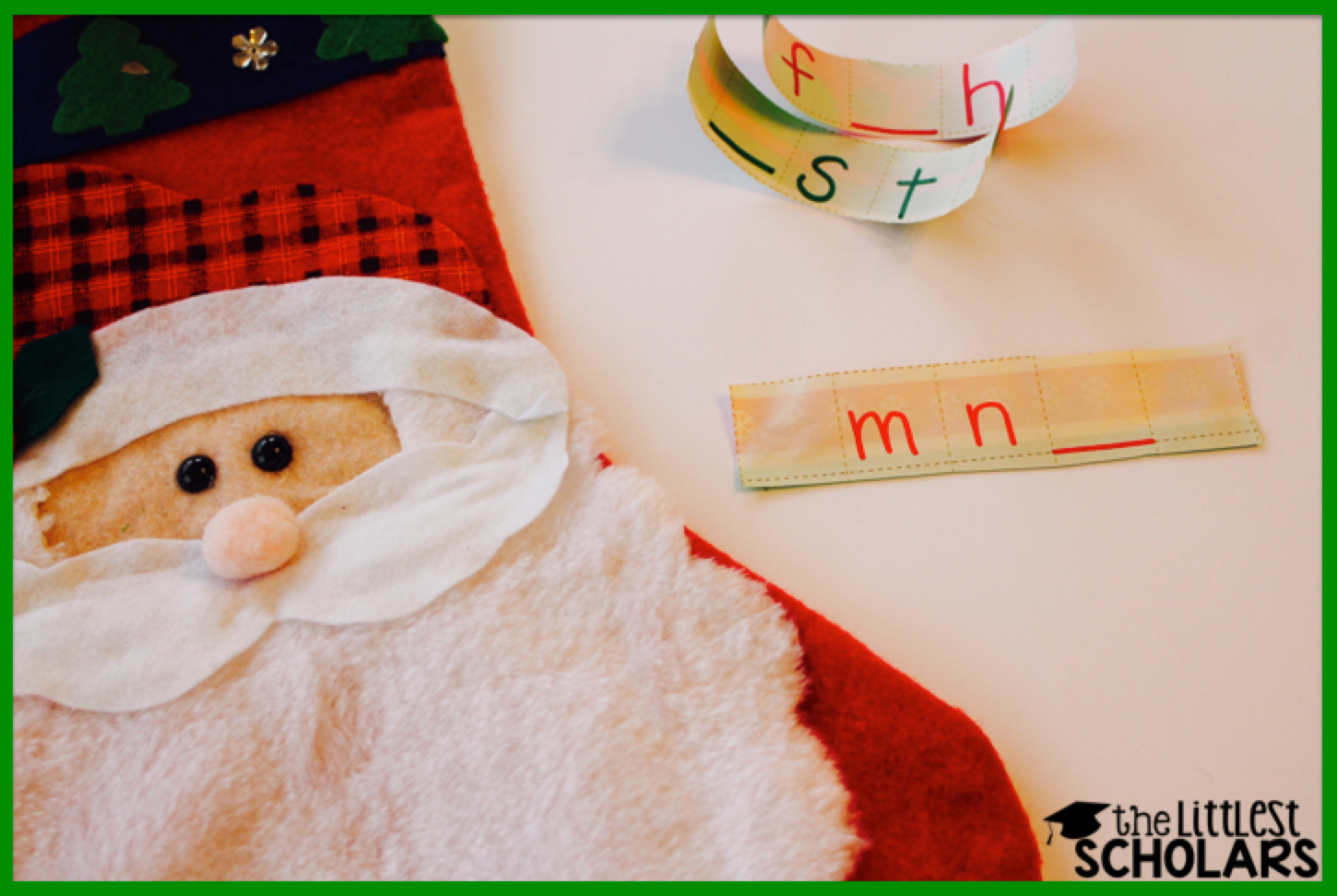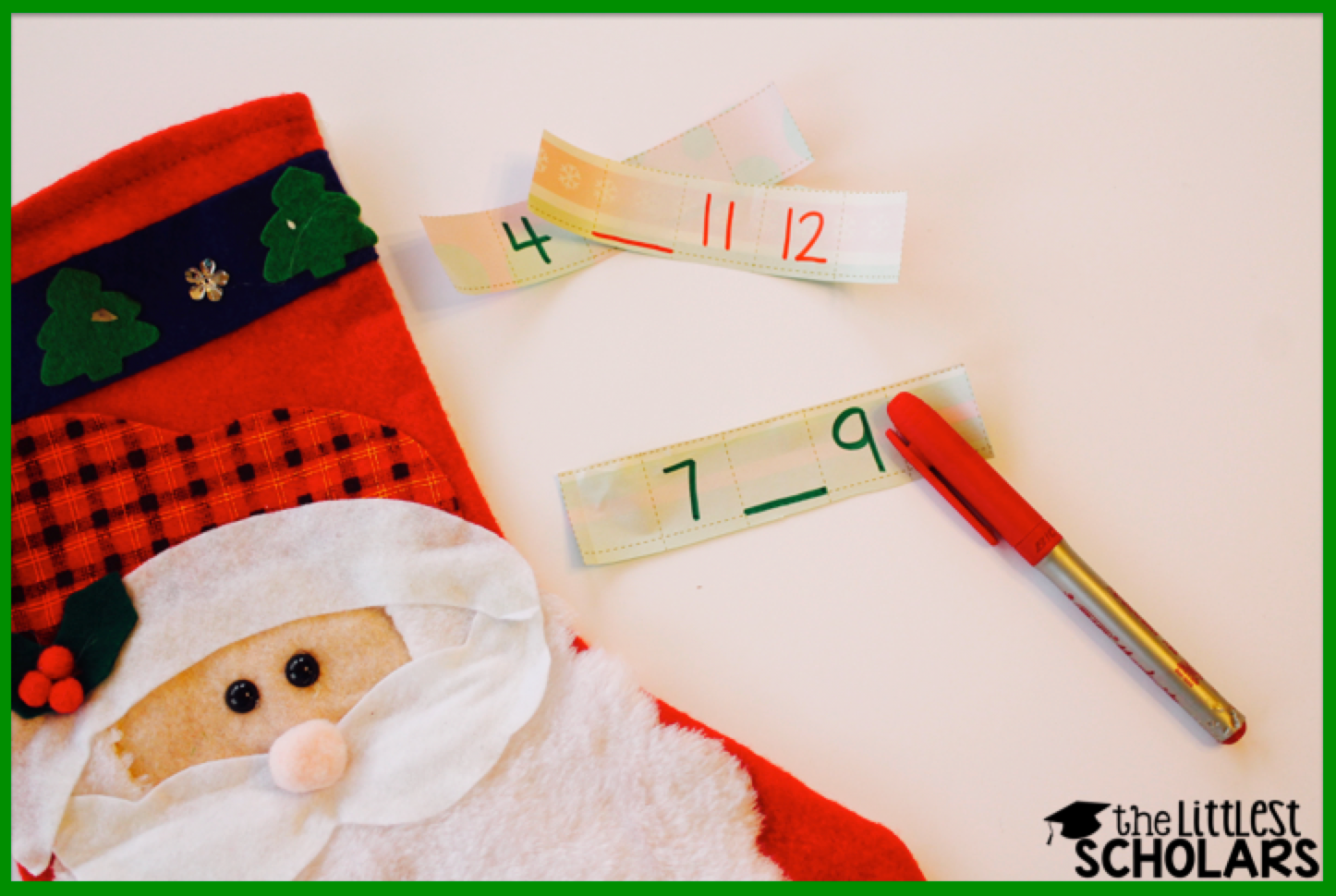Practice Letter Recognition with a Letter Box

First Days of School Tip: Use a Flashlight
Don't Start School Without a Flashlight
The first days and weeks of school can be hectic! Use this tip to get your little scholars acquainted with their new classroom. After you introduce new areas of the classroom, check for understanding by turning out the lights and giving one of your little scholars a flashlight. Ask them to shine the light on various places in the classroom. It's a fun way to get acquainted to their new surroundings!
Here are some ideas:
-Where do you sit on the rug?
-Where is your chair?
-Where do you hang up your backpack?
-Where do we start to line up?
-Where do you put trash?
-Where do you get a pencil if you need one?
What else can you spotlight in your classroom?
The first days and weeks of school can be hectic! Use this tip to get your little scholars acquainted with their new classroom. After you introduce new areas of the classroom, check for understanding by turning out the lights and giving one of your little scholars a flashlight. Ask them to shine the light on various places in the classroom. It's a fun way to get acquainted to their new surroundings!
Here are some ideas:
-Where do you sit on the rug?
-Where is your chair?
-Where do you hang up your backpack?
-Where do we start to line up?
-Where do you put trash?
-Where do you get a pencil if you need one?
What else can you spotlight in your classroom?
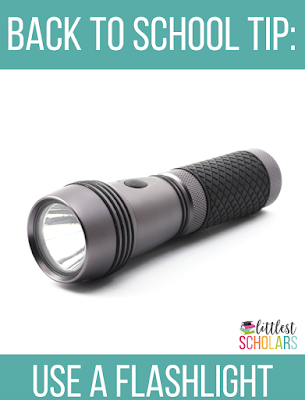 |

Rhyme and Alliteration [Building Blocks of Phonological Awareness]
Next up in this series is rhyme and alliteration! Before we dive in, let's talk about phonological awareness and how rhyme and alliteration fit in to the larger phonological awareness continuum of skills.
What is phonological awareness?
Phonological awareness is the ability to think about, recognize, and manipulate the sounds in spoken language. Phonological awareness activities work with rhymes, words, syllables, and onset rimes--all without the use of print. The last stage of phonological awareness is actually phoneme awareness: blending, segmenting, and manipulating phonemes (sounds). Phonological awareness skills generally develop along a continuum ranging from simple to more complex.Why is phonological awareness important?
Research suggests that phonemic awareness is the single best predictor of reading success. But because these skills develop along a continuum, we can't just start with phonemes (or individual sounds in words)! We must start at the beginning, ensuring children have a solid foundation in all phonological awareness skills.
How do you teach phonological awareness?
I've found the key to building phonological awareness skills in your little scholars and making them stick is to use kinesthetic motions and pictures--this way they are hearing, seeing, and moving! I also gradually release responsibility with the "I do, we do, you do" model, giving my little scholars lots of opportunities to practice and receive feedback.
Now, let's talk about rhyme and alliteration.
Now, let's talk about rhyme and alliteration.
Rhyme
Rhyming is a complex skill and it is a skill that benefits from being constantly spiraled back to. It begins with your little scholars simply enjoying and imitating rhymes and moves on to recognizing rhymes, then finally producing rhymes.

Listening [Building Blocks of Phonological Awareness]
I cannot begin to tell you how excited I am about this series of posts. As early childhood educators, teaching phonological awareness is so important! Children are stronger readers and spellers when they have a solid foundation of phonological awareness.
If you haven't already, be sure to download my free Listening Activities printables!
The next post in this series is about rhyme and alliteration and you can read it here. Also, join our Facebook group for more ideas!
SaveSave
I'm kicking off this series on the Building Blocks of Phonological Awareness with Listening. Before we get into listening, let's talk about phonological awareness in general.
What is phonological awareness?
Phonological awareness is the ability to think about, recognize, and manipulate the sounds in spoken language. Phonological awareness activities work with rhymes, words, syllables, and onset rimes--all without the use of print. The last stage of phonological awareness is actually phoneme awareness: blending, segmenting, and manipulating phonemes (sounds). Phonological awareness skills generally develop along a continuum ranging from simple to more complex.Why is phonological awareness important?
Research suggests that phonemic awareness is the single best predictor of reading success. Because the skills develop along a continuum, we can't just start with phonemes! We must start at the beginning, ensuring children have a solid foundation in all phonological awareness skills.
How do you teach phonological awareness?
I've found the key to building phonological awareness skills in your little scholars and making them stick is to use kinesthetic motions and pictures--this way they are hearing, seeing, and moving! I also gradually release responsibility with the "I do, we do, you do" model, giving my little scholars lots of opportunities to practice and receive feedback.
So, let's get on to listening.
So, let's get on to listening.
Listening
When it comes to phonological awareness, listening is more than just hearing. Listening is being able to "tune-in" to sounds in the environment and sounds that are spoken. For example, a child with strong listening skills will be able to listen to a series of sounds and name them in the correct order. For example, the child might hear audio clips of a sheep, cow, and horse. The child with strong listening skills will be able to select pictures in the order she heard the sounds. She'd pick up the sheep first, cow next, and horse last.
Listening Activities
Bingo
One of my favorite activities to develop listening skills is playing bingo! Children are each given a bingo game board with a variety of pictures on it. You can make the sound or play audio clips as your little scholars identify the animal or object that makes the sound. You can download the Farm Sounds Bingo pictured below for free in my Listening Activities printables. I've included audio clips that can be accessed by scanning the QR codes. If you are unable to scan the QR codes, you can always just make the animal sounds yourself.Left Out
For this activity, place two or three animal pictures on the table. Make all but one of the animal noises and then ask, "Which animal did not make a sound?" Your little scholars should be able to identify the animal that was left out. I've included pictures of farm animals that can be used for this activity in my Listening Activities printables. Download it for free!
Freeze Dance
Get those wiggles out and strengthen listening skills at the same time! Tell your little scholars that when the music is on they can dance, wiggle, and move but when the music is off they stop moving. Turn on some kid-friendly music and pause it intermittently as the song plays. This game is always a favorite in my classroom!
1, 2, 3 Listen to Me
Give children 2 or 3 step directions and encourage them to follow them in order. Start with two step directions until your little scholars have the hang of it. You might say, "Clap your hands. Touch your head. Jump up and down." This is a great activity to do during transition times!
Instruments in Order
Set children's musical instruments on the table. Ask your little scholars to close their eyes. Play 2 or 3 musical instruments one at a time. Ask them to open their eyes and play those instruments in the correct order. I have these musical instruments and they are a hit!If you haven't already, be sure to download my free Listening Activities printables!
The next post in this series is about rhyme and alliteration and you can read it here. Also, join our Facebook group for more ideas!
SaveSave

Making Your Books Indestructible
As teachers we know how critical reading to children is for their literacy development, but did you know that more than half of low-income families do not have children's books in their homes? One way we can help bring books into children's homes is establishing a lending library in our classrooms. High quality books can be expensive to replace so I wanted to share a way to make the books in your lending library virtually indestructible--tear proof and easy to clean!
What You'll Need:
[I've included Amazon links for your shopping ease. If you make a purchase using my link, Amazon credits me a very small percentage. But don't worry, it doesn't cost you any extra!]
paperback books
staple remover
paper cutter
laminator
laminating pouches
binding machine and coils or binder rings and 3-hole punch
Directions
1. Disassemble the book by removing the staples on the spine. I like using this flat staple remover instead of the claw kind because it is easier to use and does less damage to the pages.
What You'll Need:
[I've included Amazon links for your shopping ease. If you make a purchase using my link, Amazon credits me a very small percentage. But don't worry, it doesn't cost you any extra!]
paperback books
staple remover
paper cutter
laminator
laminating pouches
binding machine and coils or binder rings and 3-hole punch
Directions
1. Disassemble the book by removing the staples on the spine. I like using this flat staple remover instead of the claw kind because it is easier to use and does less damage to the pages.
2. Cut the cover and pages in half.
3. Laminate the pages and trim the excess, but be sure to leave enough lamination on the left side for the binding. [I used to buy the Scotch laminating pouches until I discovered Amazon sells other brands for much cheaper. The quality is just as good and they are sometimes nearly half the price!]
4. Punch holes using a book binding machine or 3-hole punch. I purchased this binding machine several years ago and use it quite frequently! It comes in handy for projects like this. If you don't have a binding machine, binder rings and a 3-hole punch will work just as well!
5. Cut off the excess coil. [Skip this step if you're using a 3-hole punch and binder rings.]
6. Bind the cover and pages. If you're using the Swingline binding machine, be sure to click the coil into place.
You can send home high-quality books without worry this way! Your little scholars will love having a rotation of books to read with their families.
For more ideas, join us in the Teaching the Littlest Scholars Facebook group.
SaveSave

Teaching the Joy of Gift Giving with Pretzel Presents and a Poem
Teaching children about the joy one feels when giving gifts is sometimes hard to do! One of my favorite ways of spreading holiday cheer is by making candy coated pretzels. These are easy to prepare and let your little scholars experience for themselves how good it feels to do something kind for someone else during the holiday season.
What You'll Need
[I've included Amazon links for your shopping ease. If you make a purchase using my link, Amazon credits me a very small percentage. But don't worry, it doesn't cost you any extra!]
[I've included Amazon links for your shopping ease. If you make a purchase using my link, Amazon credits me a very small percentage. But don't worry, it doesn't cost you any extra!]
pretzels (I like using both mini pretzels and pretzel rods)
holiday sprinkles
baking sheet(s)
Directions
1. Place parchment paper on a baking sheet or two depending on how many pretzels you are making.
2. Melt your candy coating per the directions on the packaging. I melt the candy coating in a deep bowl because it is much easier to dip them that way!
3. Dip the pretzels about 1/2 - 3/4 of the way into the candy coating and swirl off the excess candy coating.
4. Place the candy coated pretzel on the parchment paper and cover it with sprinkles before the candy coating hardens. I like to use a variety of fun holiday sprinkles!
5. After the baking sheet is full, place it in the freezer for 10-15 minutes to let the candy coating harden.
6. Remove pretzels from freezer.
Schools have different policies on having and preparing food in the classroom so your little scholars may be able to help with all the steps. I prefer to make the pretzels at home and bring them in a big covered tray to school. I create a list of every adult in the school and assign a different teacher or support staff (or two) to each little scholar in my class. They then get to choose the pretzels for the teacher or support staff they will be giving them to and we put them in the plastic treat bags. My little scholars also pick the ribbon we use to tie the bag and they color and sign their own poems. Once we've got everything assembled, we head out to deliver the treats! We walk through the hallways and my little scholars personally deliver the treats. The teachers and support staff are so gracious and give my little scholars the biggest hugs! When we get back to the classroom we discuss how it makes our hearts feel happy to do something nice for others. Some children may not have the opportunity to buy or make a gift for someone else, so this is an experience they will not forget!
You can download the poems [here]. I've included a Christmas poem and a winter themed poem so you can choose which suits your needs best!
The holidays this year have come and gone, so pin an image from this post so you'll know where to find this next holiday season!
You can download the poems [here]. I've included a Christmas poem and a winter themed poem so you can choose which suits your needs best!
The holidays this year have come and gone, so pin an image from this post so you'll know where to find this next holiday season!

Math and Literacy Activities using Scraps of Wrapping Paper [Freebie]
Today I was wrapping presents and as much as I tried to measure the paper to fit the gift perfectly, I inevitably had to cut strips of the wrapping paper off to wrap them just right. I was cleaning up the table and this pile of wrapping paper strips was staring at me. I couldn't let this cute wrapping paper go to waste! So I thought of a few fun literacy and math activities using scrap pieces of wrapping paper you have lying around.
I wrote letters on these strips of wrapping paper to practice letter name and letter sound fluency. It's about that time of year for another round of DIBELS or AIMSweb assessments and this would make practice fun! I wrote letters on several strips of paper and put them in the cute Santa bag. During small group, my little scholars can pull out a strip and say the letter names or letter sounds as quickly as they can.
I wrote numbers on the scrap wrapping paper strips to practice number identification fluency. As a warm-up before small group math, my little scholars can choose a wrapping paper strip from the bag and identify the numbers as quickly as possible.
I also wanted to use the scrap of wrapping paper to make a center my little scholars could do independently. I wrote a series of letters on each small strip with a missing letter. My little scholars will say the letters, identify the letter that is missing, and record the series of letters on the recording sheet. I placed the strips in a stocking for a little novelty--I know they'll love it!
I did the same thing except using numbers for this next center idea. My little scholars will pull a wrapping paper strip out of the stocking, says the numbers, identify the number that is missing, and write the series of numbers on the recording sheet.
I love including a recording sheet for accountability and you can download one to use by clicking the picture below.

Subscribe to:
Posts (Atom)













